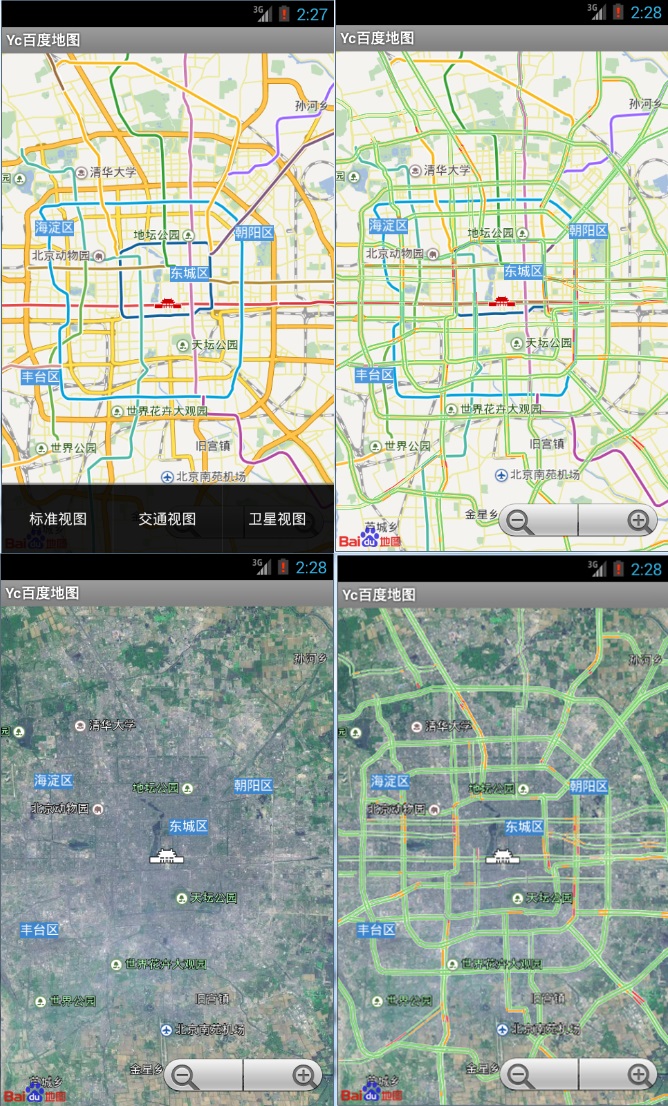Swift UI学习UITableView and protocol use
Models: UserModel.swift
Views: UserInfoCell.swift
Controllers: RootViewController.swift, DetailViewController.swift
AppDelegate.swift:
import UIKit
@UIApplicationMain
class AppDelegate: UIResponder, UIApplicationDelegate {
var window: UIWindow?
func application(application: UIApplication, didFinishLaunchingWithOptions launchOptions: NSDictionary?
) -> Bool { self.window = UIWindow(frame: UIScreen.mainScreen().bounds) // let rootController = RootViewController(style: UITableViewStyle.Plain) let rootNav = UINavigationController(rootViewController: rootController) self.window!.rootViewController = rootNav // self.window!.backgroundColor = UIColor.whiteColor() self.window!.makeKeyAndVisible() return true } }
UserModel.swift
import Foundation
//
// @brief The model of user, using to store user datas
// @author huangyibiao
//
class UserModel : NSObject {
var userName: String ///< store user's name, optional
var userID: Int ///< store user's ID
var phone: String? ///< store user's telephone number
var email: String? ///< store user's email
// designated initializer
init(userName: String, userID: Int, phone: String?, email: String?) {
self.userName = userName
self.userID = userID
self.phone = phone
self.email = email
super.init()
}
}
UserInfoCell.swift:
import Foundation
import UIKit
//
// @brief The cell of showing user infos
// @author huangyibiao
//
class UserInfoCell : UITableViewCell {
var userNameLabel : UILabel!
var phoneLabel : UILabel!
var emailLabel : UILabel!
init(style: UITableViewCellStyle, reuseIdentifier: String!) {
super.init(style: style, reuseIdentifier: reuseIdentifier)
userNameLabel = UILabel(frame: CGRectMake(30, 0, 100, 44))
userNameLabel.backgroundColor = UIColor.clearColor()
userNameLabel.font = UIFont.systemFontOfSize(14)
self.contentView.addSubview(userNameLabel)
phoneLabel = UILabel(frame: CGRectMake(120, 0, 200, 20))
phoneLabel.backgroundColor = UIColor.clearColor()
phoneLabel.font = UIFont.systemFontOfSize(12)
self.contentView.addSubview(phoneLabel)
emailLabel = UILabel(frame: CGRectMake(120, 20, 200, 20))
emailLabel.backgroundColor = UIColor.clearColor()
emailLabel.font = UIFont.systemFontOfSize(12)
self.contentView.addSubview(emailLabel)
}
func configureCell(userModel: UserModel?) {
if let model = userModel {
userNameLabel.text = model.userName
phoneLabel.text = model.phone
emailLabel.text = model.email
}
}
}
import Foundation
import UIKit
//
// @brief 作为窗体的rootViewControllor
// @author huangyibiao
//
class RootViewController : UITableViewController, DetailViewControllerDelegate {
var dataSource = NSMutableArray()
var currentIndexPath: NSIndexPath?
override func viewDidLoad() {
super.viewDidLoad()
for index in 0...12 {
let model = UserModel(userName: "name:\(index + 1)",
userID: index, phone: "13877747982", email: "632840804@qq.com")
dataSource.addObject(model)
}
self.title = "UITableViewDemo"
}
override func tableView(tableView: UITableView!, numberOfRowsInSection section: Int) -> Int {
return dataSource.count
}
override func tableView(tableView: UITableView!, cellForRowAtIndexPath indexPath: NSIndexPath!) -> UITableViewCell! {
// can't use static?
let cellIdentifier: String = "UserInfoCellIdentifier" // may be no value, so use optional var cell: UserInfoCell?
= tableView.dequeueReusableCellWithIdentifier(cellIdentifier) as? UserInfoCell if cell == nil { // no value cell = UserInfoCell(style: UITableViewCellStyle.Default, reuseIdentifier: cellIdentifier) } let model: UserModel?
= dataSource[indexPath.row] as? UserModel cell!.configureCell(model) return cell } override func tableView(tableView: UITableView!, didSelectRowAtIndexPath indexPath: NSIndexPath!) { let detail = DetailViewController() detail.userModel = dataSource[indexPath.row] as?
UserModel detail.delegate = self currentIndexPath = indexPath self.navigationController.pushViewController(detail, animated: true) } func changeItem(forUserModel userModel: UserModel?) { var index = 0 for index = 0; index < dataSource.count; index++ { let model = dataSource[index] as UserModel if model.userID == userModel?.userID { model.phone = userModel?
.phone model.email = userModel?.email tableView.reloadRowsAtIndexPaths([currentIndexPath!], withRowAnimation: UITableViewRowAnimation.Fade) break } } } }
DetailViewController.swift:
import Foundation
import UIKit
// this delegate needs a @objc, because @optional is only for objective-c, not for swift
@objc protocol DetailViewControllerDelegate : NSObjectProtocol {
@optional func changeItem(forUserModel userModel: UserModel?)
}
class DetailViewController : UIViewController {
var userModel: UserModel?
var delegate: DetailViewControllerDelegate?
override func viewDidLoad() {
super.viewDidLoad()
self.view.backgroundColor = UIColor.whiteColor()
self.title = userModel?
.userName let button = UIButton(frame: CGRectMake(10, 200, 300, 40)) button.setTitle("change", forState:UIControlState.Normal) button.backgroundColor = UIColor.redColor() button.addTarget(self, action: "onChangeButtonClick:", forControlEvents: UIControlEvents.TouchUpInside) self.view.addSubview(button) } func onChangeButtonClick(sender: UIButton!) { if userModel { userModel!.userName = "ChangeName" // changeItem needs to add a ? to the end, before (), because // this function is optional // delegate?
表示可能没有代理。而changeItem?
表示方法可能没有实现,这样写就算没有实现也没有问题 delegate?.changeItem?
(forUserModel: userModel) self.navigationController.popViewControllerAnimated(true) } } }
效果图:
版权声明:本文博客原创文章,博客,未经同意,不得转载。
本文转自mfrbuaa博客园博客,原文链接:http://www.cnblogs.com/mfrbuaa/p/4727952.html,如需转载请自行联系原作者








